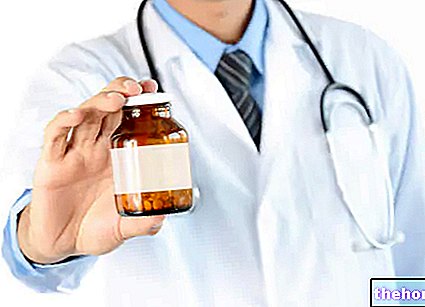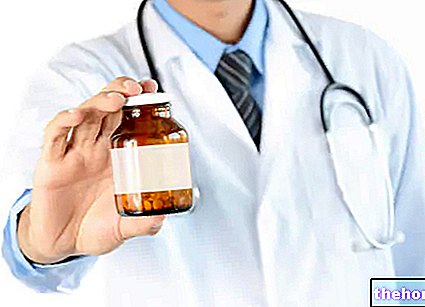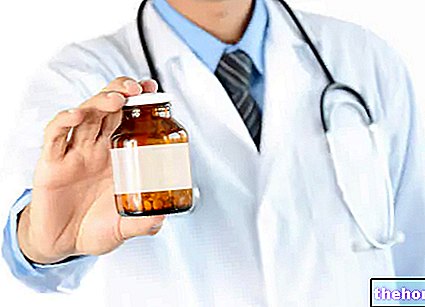Active ingredients: Felodipine
Plendil 5 mg prolonged-release tablets
Plendil 10 mg prolonged-release tablets
Why is Plendil used? What is it for?
Pharmacotherapeutic group
Dihydropyridine derivative with antihypertensive and antianginal activity.
Therapeutic indications
Hypertension. Stable angina pectoris.
Contraindications When Plendil should not be used
Pregnancy; known hypersensitivity to felodipine or to any of the excipients; uncompensated heart failure; acute myocardial infarction; unstable angina pectoris; hemodynamically significant cardiac valve obstruction; dynamic obstruction of cardiac outflow; cardiogenic shock.
Precautions for use What you need to know before taking Plendil
Felodipine can cause the onset of significant hypotension, resulting in tachycardia. This can cause myocardial ischaemia in predisposed patients.
Felodipine should be used with caution in patients who have a predisposition to develop tachycardia.
Felodipine is eliminated by the liver. Consequently, higher therapeutic concentrations and a superior response can be expected in patients with clearly reduced liver function (See also section DOSE, METHOD AND TIME OF ADMINISTRATION).
Mild gingival hyperplasia has been reported in patients with marked gingivitis / periodontitis. Such hyperplasia can be avoided or reversed by "careful dental hygiene.
Interactions Which drugs or foods can change the effect of Plendil
Enzymatic interactions
Felodipine is metabolised in the liver by cytochrome P450 3A4 (CYP3A4). CYP3A4 inhibitors and inducers may affect felodipine plasma concentrations. Interactions causing an increase in the plasma concentration of felodipine.
Cytochrome P450 3A4 enzyme inhibitors, such as cimetidine, erythromycin, itraconazole, ketoconazole, anti-HIV drugs / protease inhibitors (e.g. ritonavir) and certain flavonoids present in grapefruit juice have been shown to cause increased plasma concentrations of felodipine. Interactions causing a decrease in the plasma concentration of felodipine.
Cytochrome P450 3A4 enzyme inducers such as phenytoin, carbamazepine, rifampicin, barbiturates, efavirenz, nevirapine and Hypericum Perforatum (St. John's wort) may lead to decreased plasma concentrations of felodipine.
Other interactions
Ciclosporin: Felodipine does not produce changes in plasma concentrations of cyclosporine.
Tacrolimus: Felodipine may increase the concentration of tacrolimus. When taken together, the serum concentrations of tacrolimus should be controlled and the dosage of tacrolimus may need to be adjusted.
Warnings It is important to know that:
Plendil contains lactose so in case of ascertained intolerance to sugars contact your doctor before taking the medicine.
Fertility, pregnancy and lactation
Pregnancy
Plendil should not be used during pregnancy.
Feeding time
Felodipine is detected in breast milk. However, if the mother takes therapeutic doses while breastfeeding, this drug is unlikely to affect the infant.
Fertility
No data on patient fertility are available.
Effects on ability to drive and use machines
Patients should know how they react to felodipine treatment before driving or using machines, as dizziness or fatigue may occur sporadically.
Dosage and method of use How to use Plendil: Dosage
Hypertension
The dose should be adjusted on an individual basis.
Treatment can start with a dose of 5 mg once a day. When needed, the dose can be reduced to 2.5 mg or increased to 10 mg per day based on the patient's response. If necessary, another antihypertensive can be added.
The usual maintenance dose is 5 mg once a day.
Hepatic impairment
Patients with hepatic impairment may have elevated plasma concentrations of felodipine and may respond to treatment with lower doses (see section Precautions for use).
Angina pectoris
The dose should be adjusted on an individual basis.
Treatment should be started with a dose of 5 mg once daily, and should be increased to 10 mg once daily as needed.
Elderly population
Treatment should begin with the lowest available dose.
Renal impairment
No dose adjustment is necessary in patients with impaired renal function.
Pediatric population
The experience gained from clinical trials on the use of felodipine in pediatric hypertensive patients is limited.
ADMINISTRATION
The tablet should be taken in the morning, swallowed whole with water and should not be broken, crushed or chewed in order to maintain the sustained release properties.
The tablets can be taken on an empty stomach or after a light meal low in fat or carbohydrates.
Overdose What to do if you have taken too much Plendil
Symptoms: Overdose can cause excessive peripheral vasodilation, with marked hypotension and sometimes bradycardia.
Treatment: activated charcoal, if necessary, perform gastric lavage.
If severe hypotension occurs, symptomatic treatment should be instituted.
Place the patient supine with the lower limbs elevated.
In case of concomitant bradycardia, 0.5-1 mg of atropine should be administered intravenously. If this is not enough, increase the volume by infusing physiological solutions (saline, glucose or dextran).
If the measures described above are insufficient, sympathomimetic drugs with a predominant effect on α1-adrenergic receptors can be administered.
Side Effects What are the side effects of Plendil
Felodipine can cause flushing, headache, palpitations, dizziness, fatigue.
These reactions, which usually appear at the start of treatment or when the administered dose is increased, are generally transient and diminish in intensity over time.
Felodipine can also cause dose-dependent ankle edema, induced by precapillary vasodilation and unrelated to generalized fluid retention.
Based on the experience gained from clinical studies, 2% of patients discontinued treatment due to the onset of ankle edema.
Mild gingival hyperplasia has been observed in patients with pronounced gingivitis / periodontitis. This hyperplasia can be avoided or treated with "careful oral hygiene. Nausea, abdominal pain, rash, tachycardia, hypotension, dizziness, paraesthesia, pruritus, asthenia, peripheral edema have also been reported. Arthralgia and myalgia have been reported rarely. , urticaria, vomiting, syncope, cases of impotence and disorders of the sexual sphere .. Very rarely have been reported hypersensitivity reactions (eg angioedema and fever), increased liver enzymes, photosensitivity, leukocytoclastic vasculitis, frequent urge to urinate.
Compliance with the instructions contained in the package leaflet reduces the risk of undesirable effects.
It is important to inform the doctor or pharmacist of any undesirable effect, even if not described in the package leaflet.
Expiry and Retention
Expiry: see the expiry date printed on the package.
WARNING: do not use the medicine after the expiry date indicated on the package. This date refers to the intact, properly stored packaging.
Store below 30 ° C.
KEEP THE MEDICINAL PRODUCT OUT OF THE REACH AND SIGHT OF CHILDREN.
Other information
Composition
Plendil 5 mg prolonged-release tablets
One prolonged-release tablet contains:
Active ingredient: 5 mg felodipine.
Plendil 5 mg tablet is pink, circular, biconvex, engraved with "A / Fm" on one side and "5" on the other side, 9 mm in diameter.
Excipients: 40 polyoxylated hydrogenated castor oil; hydroxypropylcellulose; propyl gallate; hypromellose; sodium aluminum silicate; microcrystalline cellulose; anhydrous lactose; sodium stearyl fumarate; polyethylene glycol 6000; titanium dioxide E171; iron oxide E172; carnauba wax; purified water.
Plendil 10 mg prolonged-release tablets
One prolonged-release tablet contains:
Active ingredient: felodipine 10 mg.
Plendil 10 mg tablet is reddish brown, circular, biconvex, engraved with "A / FE" on one side and "10" on the other side, 9 mm in diameter.
Excipients: 40 polyoxylated hydrogenated castor oil; hydroxypropylcellulose; propyl gallate; hypromellose; sodium aluminum silicate; microcrystalline cellulose; anhydrous lactose; sodium stearyl fumarate; polyethylene glycol 6000; titanium dioxide E171; iron oxide E172; carnauba wax; purified water.
Pharmaceutical form and content
Plendil 5 mg prolonged-release tablets:
- 28 prolonged-release tablets of 5 mg.
Plendil 10 mg prolonged-release tablets:
- 14 prolonged-release tablets of 10 mg.
- 28 prolonged-release tablets of 10 mg - NON-MARKET PACKAGING.
Source Package Leaflet: AIFA (Italian Medicines Agency). Content published in January 2016. The information present may not be up-to-date.
To have access to the most up-to-date version, it is advisable to access the AIFA (Italian Medicines Agency) website. Disclaimer and useful information.
01.0 NAME OF THE MEDICINAL PRODUCT
PLENDIL
02.0 QUALITATIVE AND QUANTITATIVE COMPOSITION
Plendil 5 mg prolonged-release tablets
One prolonged-release tablet contains:
Active principle: felodipine 5 mg.
Plendil 10 mg prolonged-release tablets
One prolonged-release tablet contains:
Active principle: felodipine 10 mg.
For the full list of excipients see section 6.1
03.0 PHARMACEUTICAL FORM
Prolonged-release tablets
04.0 CLINICAL INFORMATION
04.1 Therapeutic indications
Hypertension. Stable angina pectoris.
04.2 Posology and method of administration
Hypertension
The dose should be adjusted on an individual basis.
Treatment can start with a dose of 5mg once a day. When needed, the dose can be reduced to 2.5 mg or increased to 10 mg per day based on the patient's response. If necessary, another antihypertensive can be added. The usual maintenance dose is 5 mg once a day.
Hepatic impairment
Patients with hepatic impairment may have elevated plasma concentrations of felodipine and may respond to treatment with lower doses (see section 4.4 Special warnings and precautions for use).
Angina pectoris
The dose should be adjusted on an individual basis.
Treatment should be started with a dose of 5 mg once daily, and should be increased to 10 mg once daily as needed.
Elderly population
Treatment should begin with the lowest available dose.
Renal impairment
No dose adjustment is necessary in patients with impaired renal function.
Pediatric population
Experience from clinical trials on the use of felodipine in pediatric hypertensive patients is limited (see sections 5.1 and 5.2).
Administration
The tablet should be taken in the morning, swallowed whole with water and should not be broken, crushed or chewed in order to maintain the sustained release properties. The tablets can be taken on an empty stomach or after a light meal low in fat or carbohydrates.
04.3 Contraindications
Pregnancy; known hypersensitivity to felodipine or to any of the excipients; uncompensated heart failure; acute myocardial infarction; unstable angina pectoris; hemodynamically significant cardiac valve obstruction; dynamic obstruction of cardiac outflow; shock cardiogenic.
04.4 Special warnings and appropriate precautions for use
Felodipine can cause the onset of significant hypotension, resulting in tachycardia. This can cause myocardial ischaemia in predisposed patients.
Felodipine should be used with caution in patients who have a predisposition to develop tachycardia.
Felodipine is eliminated by the liver. Consequently, higher therapeutic concentrations and a superior response can be expected in patients with clearly reduced liver function. (See also section 4.2 Posology and method of administration).
Plendil contains lactose: Patients with hereditary problems of galactose intolerance, the Lapp lactase deficiency, or glucose-galactose malabsorption should not take this medicine.
04.5 Interactions with other medicinal products and other forms of interaction
Enzymatic interactions
Inhibitors and inducers of the cytochrome P450 3A4 isoenzyme may influence the plasma concentrations of felodipine.
Interactions causing an increase in the plasma concentration of felodipine
Enzyme inhibitors such as cimetidine, erythromycin, itraconazole, ketoconazole, anti-HIV drugs / protease inhibitors (e.g. ritonavir) and certain flavonoids present in grapefruit juice have been shown to cause increased plasma concentrations of felodipine.
Interactions causing a decrease in the plasma concentration of felodipine
Enzyme inducers, such as phenytoin, carbamazepine, rifampicin, barbiturates, efavirenz, nevirapine and Hypericum Perforatum (St. John's wort) can lead to a decrease in plasma concentrations of felodipine.
Other interactions
Cyclosporine
Felodipine does not produce changes in the plasma concentrations of cyclosporine.
Other extensively linked drugs
The high degree of plasma protein binding of felodipine does not appear to modify the free fraction of other extensively bound drugs, such as warfarin.
Tacrolimus
Felodipine may increase the concentration of tacrolimus. When taken together, the serum concentrations of tacrolimus should be controlled and the dosage of tacrolimus may need to be adjusted.
04.6 Pregnancy and breastfeeding
Pregnancy
Felodipine should not be used during pregnancy.
Feeding time
Felodipine is detected in breast milk. However, if the mother takes therapeutic doses while breastfeeding, this drug is unlikely to affect the infant.
Fertility
No data on patient fertility are available (see also section 5.3).
04.7 Effects on ability to drive and use machines
Patients should know how they react to felodipine treatment before driving or using machines, as dizziness or fatigue may occur sporadically.
04.8 Undesirable effects
Like other arterial vasodilators, felodipine can cause flushing, headache, palpitations, dizziness, fatigue. Most of these reactions are dose dependent and appear at the start of treatment or after a dose increase. Should they occur, these reactions are usually transient and diminish over time.
As with other dihydropyridines, patients treated with felodipine may experience dose-dependent ankle edema, induced by precapillary vasodilation and unrelated to generalized fluid retention. Based on the experience gained from clinical studies, 2% of patients discontinued treatment due to the onset of ankle edema.
As with other calcium channel blockers, mild gingival hyperplasia has been observed in some patients with pronounced gingivitis / periodontitis. Such hyperplasia can be avoided or treated with "careful oral hygiene.
The following adverse reactions were identified during clinical trials and through the collection of pharmacovigilance data.
The following frequency definitions are used:
• very common ≥1 / 10
• common ≥1 / 100 e
• uncommon ≥1 / 1,000 e
• rare ≥1 / 10,000 e
• very rare
04.9 Overdose
Symptoms
Overdose can cause excessive peripheral vasodilation, with marked hypotension and sometimes bradycardia.
Treatment
Activated vegetable carbon, if necessary, perform gastric lavage.
If severe hypotension occurs, symptomatic treatment should be instituted.
Place the patient supine with the lower limbs elevated.
In case of concomitant bradycardia, 0.5-1 mg of atropine should be administered intravenously. If this is not enough, increase the volume by infusing physiological solutions (saline, glucose or dextran).
If the measures described above are insufficient, can sympathomimetic drugs be administered with a prevalent effect on adrenergic receptors? 1.
05.0 PHARMACOLOGICAL PROPERTIES
05.1 Pharmacodynamic properties
Pharmacotherapeutic group: dihydropyridine derivative with antihypertensive and antianginal activity.
ATC code: C08CA02.
Felodipine is a highly selective vascular calcium channel blocker, which reduces blood pressure by reducing peripheral vascular resistance.Due to its high degree of selectivity on arteriolar smooth muscle, felodipine, at therapeutic doses, does not have a direct effect on cardiac contractility and conduction.
Since felodipine has no effect on venous wall smooth muscle, or vasomotor sympathetic control, it is not associated with orthostatic hypotension. Felodipine has a mild natriuretic and diuretic effect and does not cause water retention.
Felodipine is effective in all stages of hypertension; it can be used either on its own or in combination with other antihypertensive drugs, for example with beta-blockers, diuretics or ACE inhibitors, in order to increase the antihypertensive effect. Felodipine is effective in lowering both systolic and diastolic blood pressure, and it can be used in the treatment of isolated systolic hypertension. It also maintains its antihypertensive action during the concomitant administration of non-steroidal anti-inflammatory drugs (NSAIDs).
The antianginal and anti-ischemic effect of the drug is based on the improvement of the oxygen demand / supply balance. The reduction of coronary vascular resistance and the increase in coronary flow and oxygen supply by felodipine, are due to dilation of the epicardial arteries and coronary arterioles Felodipine acts effectively on episodes of coronary spasm.
The drug-induced reduction in systemic blood pressure leads to a decrease in left ventricular afterload and a decrease in myocardial oxygen demand.
Felodipine improves exercise tolerance and reduces angina attacks in patients with stable exertional angina pectoris; in patients with stable angina pectoris felodipine can be used alone or in combination with a beta blocker. In patients with vasospastic angina it reduces both Silent and symptomatic myocardial ischemia.
The product is effective and well tolerated in patients of all ages and races even in the presence of concomitant diseases such as congestive heart failure, asthma and other obstructive pulmonary diseases, impaired renal function, diabetes mellitus, gout, hyperlipidemia, Raynaud's disease and in patients who have undergone kidney transplant. Felodipine has no effect on blood glucose levels or the lipid profile.
Site and mechanism of action
The predominant pharmacodynamic feature of felodipine is its marked vascular versus myocardial selectivity. The smooth muscle cells of the resistance arteries are particularly sensitive to felodipine.
The molecule inhibits the excitability and contractile activity of vascular smooth muscle cells by acting on the calcium channels present in the cell membrane.
Hemodynamic effects
The primary haemodynamic effect of felodipine is a reduction in total peripheral vascular resistance; this leads to a decrease in blood pressure. These effects are dose-dependent. Generally there is a decrease in blood pressure two hours after the first oral dose, and this decrease persists for at least 24 hours, with a trough / peak ratio greater than 50% The plasma concentration of felodipine is directly related to the reduction of peripheral vascular resistance and blood pressure.
Cardiac effects
At therapeutic doses, felodipine has no effect on cardiac contractility, atrioventricular conduction or refractoriness. In patients with heart failure, felodipine acts favorably on left ventricular function, as shown by the measurement of ejection fraction or systolic stroke, and does not cause neurohormonal activation. However felodipine does not affect survival.
In patients with hypertension or angina pectoris it can also be used in the presence of left ventricular dysfunction.
Antihypertensive treatment with felodipine is associated with a significant regression of pre-existing left ventricular hypertrophy.
Kidney effects
Felodipine exerts a natriuretic and diuretic effect by reducing the tubular reabsorption of filtered sodium. This explains the absence of salt and water retention observed with other vasodilators. Felodipine does not alter the daily excretion of potassium. Renal vascular resistance is reduced by felodipine.
The normal glomerular filtration rate remains unchanged. In patients with impaired renal function the glomerular filtration rate may increase. The drug does not affect the urinary excretion of albumin.
In patients treated with cyclosporine, after kidney transplantation, felodipine reduces blood pressure, improves renal blood flow and glomerular filtration rate. Felodipine is also able to restore the function of the transplanted kidney early.
In the HOT (Hypertension Optimal Treatment) clinical trial with felodipine as background therapy, the correlation between major cardiovascular events (acute myocardial infarction, stroke and death from cardiovascular causes) and three target diastolic blood pressure levels (≤90 mmHg, ≤85 mmHg, ≤80 mmHg) and the diastolic pressure achieved with felodipine.
A total of 18,790 hypertensive patients (PAD 100-115 mmHg) aged 50-80 years were followed for a mean of 3.8 years (range 3.3-4.9). Felodipine was given as monotherapy or in combination with a beta blocker, and / or ACE inhibitor and / or diuretic.
The study demonstrated the benefit of reducing PAS and PAD to levels of 139 and 83 mmHg, respectively. It is estimated that lowering diastolic blood pressure from 105 mmHg to 83 mmHg can prevent 5 to 10 major cardiovascular events per 1000 patients treated for one year.
This implies a risk reduction of 30%. The benefit was particularly evident in the subgroup of patients with diabetes mellitus.
The clinical experience of the use of felodipine in hypertensive pediatric patients is limited. In a randomized, double-blind, parallel-group, three-week study in children aged 6 to 16 years with primary hypertension, the antihypertensive effect of felodipine 2.5 mg (n = 33), 5 mg (n = 33) and 10 mg (n = 31) administered once daily was compared with placebo (n = 35). The study failed to demonstrate the efficacy of felodipine in lowering blood pressure in children aged 6 and 16 years old.
The long-term effects of felodipine on growth, puberty and general development have not been studied. Furthermore, the long-term efficacy of felodipine as a therapy in childhood for the reduction of cardiovascular morbidity and mortality in adulthood has not been established.
05.2 Pharmacokinetic properties
Absorption and distribution
Following oral administration of the prolonged-release tablets, felodipine is completely absorbed from the gastrointestinal tract. Systemic bioavailability is approximately 15% and is dose independent over the therapeutic range.
The plasma protein binding is 99%, mainly with the albumin fraction.
Prolonged-release tablets result in a prolonged absorption phase of felodipine. This results in a uniform plasma concentration curve and therapeutic concentrations still present 24 hours after administration. Plasma concentrations are directly proportional to dose in the therapeutic range.
Metabolism and elimination
Felodipine is extensively metabolised by the liver, and all identified metabolites are inactive.
The mean clearance of felodipine is high with mean values of 1200 ml / min. The mean elimination half-life is approximately 24 hours. No accumulation occurs during prolonged treatment.
Approximately 70% of the administered dose is excreted as metabolites in the urine, the remainder in the faeces.
Less than 0.5% of the administered dose is excreted unchanged in the urine.
Elderly patients and those with impaired liver function have on average higher plasma concentrations of felodipine than younger patients. The kinetics of felodipine do not change in patients with impaired renal function including subjects on hemodialysis.
In a single dose pharmacokinetic study (felodipine prolonged release 5 mg) with a limited number of children aged 6-16 years (n = 12) there was no apparent correlation between age and AUC, Cmax or half-life of felodipine. .
05.3 Preclinical safety data
Reproductive toxicity
In a fertility and general reproductive performance study in felodipine-treated rats, prolongation of the time to farrowing leading to difficulty in labor was observed in the medium and high dose groups. increased fetal deaths and early postnatal deaths. These effects were attributed to the inhibitory effect on uterine contractility of felodipine at high doses. At therapeutic doses the drug did not cause fertility disturbances in the rat.
Reproduction studies in rabbits have shown dose-related and reversible enlargement of the mammary glands in mothers and dose-related digital abnormalities in fetuses. Such abnormalities are found when the drug was administered during the early stages of fetal development (before the 15th day of pregnancy).
Felodipine was found to be devoid of mutagenic power.
06.0 PHARMACEUTICAL INFORMATION
06.1 Excipients
Hydrogenated castor oil 40 polyoxylate, hydroxypropylcellulose, propyl gallate, hypromellose, sodium aluminum silicate, microcrystalline cellulose, lactose, sodium stearyl fumarate, macrogol, titanium dioxide, yellow iron oxide, red iron oxide, carnauba wax.
06.2 Incompatibility
Not relevant.
06.3 Period of validity
3 years.
06.4 Special precautions for storage
Store at a temperature not exceeding 30 ° C.
06.5 Nature of the immediate packaging and contents of the package
Aluminum or PVC / PVDC blisters.
Plendil 5 mg prolonged-release tablets
Box of 28 tablets
Plendil 10 mg prolonged-release tablets
Box of 14 tablets
Plendil 10 mg prolonged-release tablets
Box of 28 tablets - NON-COMMERCE PACKAGING
06.6 Instructions for use and handling
No special instructions.
07.0 MARKETING AUTHORIZATION HOLDER
AstraZeneca S.p.A. - Palazzo Volta, Via F. Sforza - 20080 Basiglio (MI)
08.0 MARKETING AUTHORIZATION NUMBER
AIC n. 028162042 - Plendil 5 mg prolonged-release tablets - 28 tablets
AIC n. 028162030 - Plendil 10 mg prolonged-release tablets - 14 tablets
AIC n. 028162055 - Plendil 10 mg prolonged-release tablets - 28 tablets
09.0 DATE OF FIRST AUTHORIZATION OR RENEWAL OF THE AUTHORIZATION
17.04.93 / 17.04.98 / 17.04.03
10.0 DATE OF REVISION OF THE TEXT
June 2012




























